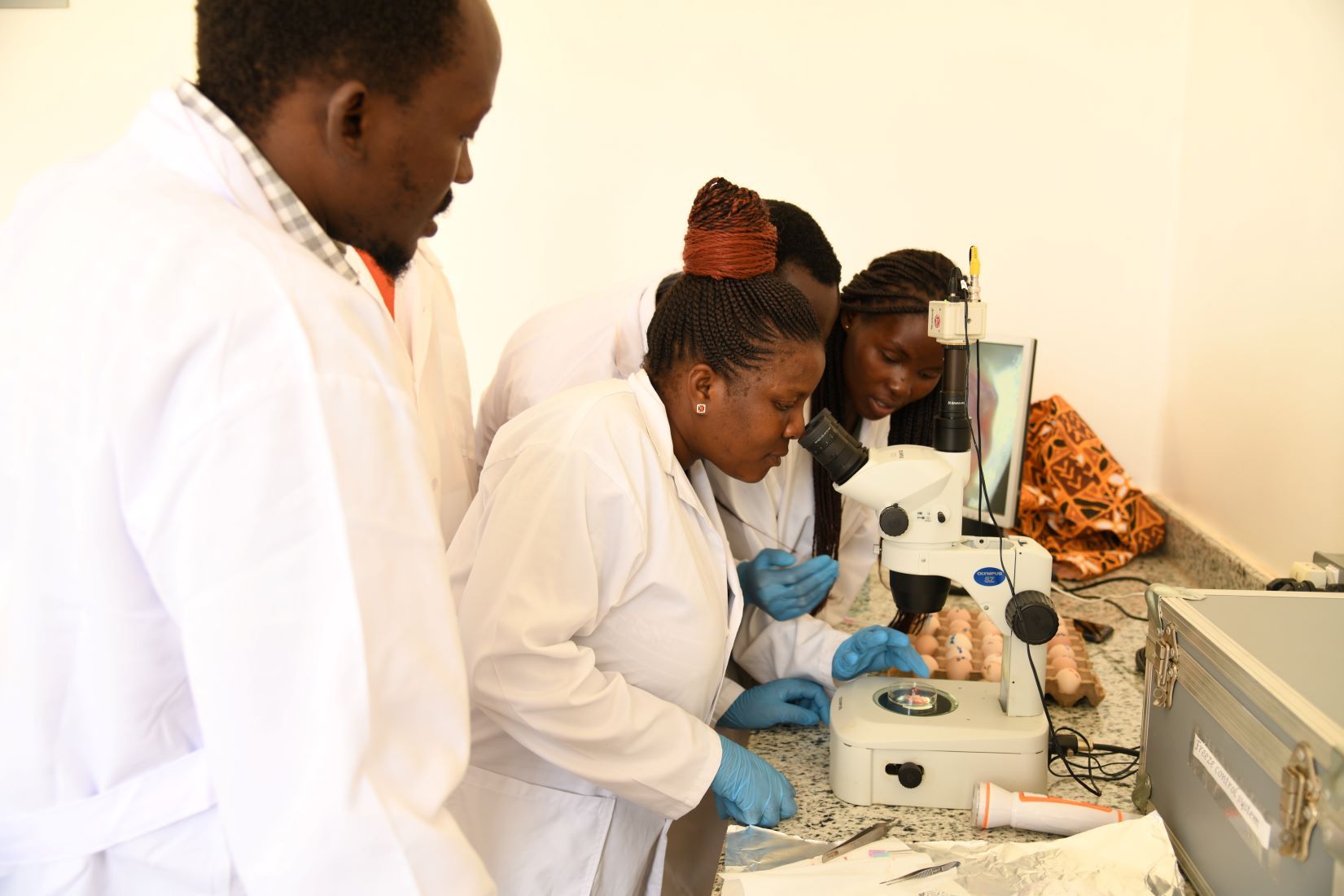
Uganda biobanking training launches new initiative to preserve Africa’s indigenous chickens
Twenty-five scientists from eastern and central Africa have benefitted from training to identify, isolate, conserve and improve poultry genetic resources, which are key measures in protecting and enhancing the value of Africa’s indigenous chickens.
The avian reproductive biotechnology training at the National Animal Genetic Resource Centre and Data Bank (NAGRC&DB) in Entebbe, Uganda, targeted experts in poultry biotechnology, breeding and conservation; managers of the regional African Union animal resources seed centres of excellence (AU-ARSCoEs), academics and poultry stakeholders.
The training is part of the ‘Biobanking of indigenous chicken breeds’ project that is preserving African and southeast Asian indigenous poultry biodiversity for subsequent use to enhance resilience, productivity and support future breeding of the tropical poultry strains. Most indigenous chicken genetic resources are maintained in situ in living populations, which exposes them to risk of loss due to disease, genetic problems, breeding cessation, or natural disasters. The periodic reproduction of in situ populations also makes indigenous chicken costly to maintain, and requires special facilities including poultry houses and farms, and human resources.
‘Preservation of biological materials in birds has been limited to the use of semen, preventing the conservation of some key genetic components. The structure of avian eggs, which restricts the preservation of ova and fertilized embryos, as contrarily done for mammalian species, is also a challenge.’
Noted Christian Tiambo, a scientist at the International Livestock Research Institute (ILRI) and one of the trainers at the workshop.
To address this challenge, avian primordial germ cells (PGCs)—the first stem cell population established during early embryo development—can be isolated and re-incorporated into the recipient embryos.
‘Avian PGCs transplantation technology enables the capture of the entire genetics of the stock and can help maintain avian genetic biodiversity without moving the genetic material from regions or countries of origin,’ added Tiambo.
The efficient isolation and propagation of chicken PGCs in vitro also represents a useful system to study the biology of local and locally adapted chicken ecotypes.
Mary Mbole Kariuki, technology and innovations expert at the African Union-InterAfrican Bureau of Animal Resources (AU-IBAR), said:
‘The continent has the highest diversity of animal genetic resources, which should be conserved.’
She noted the importance of locally-bred animal genetics to livelihoods, and the need to conserve breeds that are adaptable to Africa.
Transfer of successful experiences is one of the most effective ways to solve the problems faced by the livestock sector. South-South knowledge exchange can help make livestock production sustainable by providing information, building capacity of scientists and practitioners, and facilitating scaling up of successful solutions.
The six-day training included two days of lectures on the principles of stem cell biobanking and four days of laboratory practical sessions using fertile eggs from various Ugandan chicken ecotypes. Participants also toured facilities at NAGRIC&DB, which is one of the five AU-IBAR regional animal resources seed centres of excellence.
Jackson Mubiru, head of assisted animal reproductive technologies at NAGRC&DB and a trainer at the workshop, emphasized the importance of biobanking:
‘We cannot conserve what we don’t know; we therefore must involve all stakeholders to collect and store genetic and phenotypic data of the available poultry breeds to support research in areas like disease resistance and increased productivity.’
Ben Lukuyu, a senior scientist and ILRI Uganda representative, shared some of ILRI’s research in the region and underscored the role of improved genetics in improving household incomes and livelihoods. He said:
‘ILRI’s work in the pig sector in Uganda has shown that when smallholder farmers access improved breeds that are more productive, their incomes improve. The poultry sector in Uganda is growing very fast, with breeds coming from different parts of the world. The sector offers an opportunity for both research and industry to improve smallholder livestock farming, while preserving the local breeds.’
The training is building a community of practice that will support knowledge transfer and national agricultural research services in livestock development, using stem cell biobanking in Africa. Materials used during the training were biobanked and the conservation actions started at the event will be extended and implemented by the trainees in their respective countries. Training outcomes will be used to advocate for development of local poultry conservation programs in eastern Africa and their related value chain for better livelihoods.
The 4–9 September 2023 ‘East Africa training workshop on reproductive and surrogate technologies for biobanking and restoration of indigenous chicken genetic resources’ was the first regional training organized within the avian reproductive and surrogate biotechnology in sub-Saharan Africa framework, a partnership initiative on South-South Cooperation. The framework is supported by ILRI, the Centre for Tropical Livestock Genetic and Health (CTLGH) through their Poultry Cellular Resources, Functional Genomics Tools and Biotechnologies Unit. Other collaborators include the African Union Development Agency-NEPAD, AU-IBAR through the regional Animal Resources Seed Centres of Excellence and the host institution, NAGRIC&DB. Participants were drawn from from Kenya, Ethiopia, Tanzania, Rwanda, Burundi, Cameroon and Uganda.
